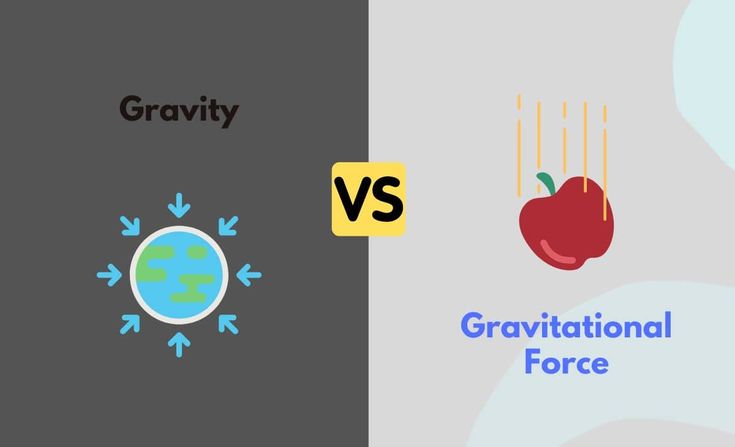At the heart of the universe’s complexities lies a profound inquiry: what distinguishes gravity from the strong force? Both of these fundamental interactions govern the behavior of matter, yet their manifestations and underlying mechanisms diverge significantly. This exploration will dissect their nature, effects, and the realms they govern, unraveling the tapestry of fundamental forces that shape our cosmos.
Fundamental Forces: An Overview
In physics, the universe operates under four fundamental forces: gravitational, electromagnetic, weak nuclear, and strong nuclear. Among these, gravity and the strong force are pivotal in their respective domains. Gravity, an omnipresent force, governs astronomical phenomena, while the strong force is crucial at subatomic levels, binding protons and neutrons within atomic nuclei. Understanding these forces forms a cornerstone of modern physics, evoking both curiosity and admiration.
Gravity: The Universal Attractor
Gravity, as articulated by Newtonian mechanics and later ameliorated by Einstein’s general relativity, is the attractive force that acts between two masses. Newton posited that every point mass attracts another point mass with a force proportional to the product of their masses and inversely proportional to the square of the distance between them. This elegant formula encapsulates the gravitational influence of celestial bodies, positioning gravity as a fundamental architect of the cosmos.
Einstein expanded this concept, describing gravity not merely as a force but as a curvature of spacetime caused by mass. In this framework, massive objects like planets and stars create a ‘dent’ in the fabric of spacetime, compelling smaller masses to follow curved trajectories. This paradigm shift not only unified the understanding of celestial movements but also illuminated the phenomenon of gravitational waves, ripples in spacetime produced by accelerating masses.
The Strong Force: The Binder of the Nucleus
Contrastingly, the strong nuclear force, or strong interaction, is the most potent force in nature, albeit limited in its range. It is responsible for holding protons and neutrons together in atomic nuclei, overcoming the electromagnetic repulsion between positively charged protons. Characterized by its short-range effectiveness—operative at distances approximately on the order of a femtometer (10^-15 meters)—the strong force is mediated by particles known as gluons, which facilitate interactions among quarks, the fundamental constituents of protons and neutrons.
The strong force’s strength is unparalleled; it is about 100 times stronger than electromagnetic force and 10^38 times stronger than gravity. This remarkable force is responsible for the stability of atomic nuclei, enabling elements to exist in nature and ultimately allowing for the diversity of matter we encounter in our universe.
Comparative Analysis: Characteristics and Implications
To delve deeper into the differences between gravity and the strong force, we can assess various attributes: strength, range, and the particles involved in their mediation. Gravity is an inherently weak force relative to other interactions, observable across vast distances—the interstellar trajectories of heavenly bodies are dictated by gravitational attraction. In contrast, the strong force, while immensely powerful, is confined to the subatomic scale.
The mediation mechanisms starkly differ as well. Gravitational interactions are mediated by hypothetical particles known as gravitons, yet these have not been confirmed experimentally. The strong force, on the other hand, relies on gluons, which are quantized excitations of the strong interaction field. This distinction shapes not only how these forces operate but also their implications for the formation and behavior of matter in differing contexts.
Moreover, gravity operates universally, affecting all matter with mass, while the strong force is selective, influencing only the constituents of atomic nuclei. Consequently, while gravity shapes the cosmos and governs large-scale structures such as galaxies and clusters, the strong force is essential during the initial moments of the universe, facilitating nucleosynthesis and the formation of elements.
The Philosophical Ramifications
The inquiry into the dichotomy of gravity and the strong force is not merely an academic exercise; it resonates with deeper philosophical musings about the nature of the universe. Why do these forces exhibit such disparate characteristics? The quest for a unified theory—one that reconciles quantum mechanics with general relativity—motivates contemporary physicists to seek a comprehensive understanding of the fundamental interactions that mold our reality.
The concept that gravity, elusive and weak, can dominate over vast distances, contrasted with the potent yet localized strong force, invites reflection on the balance of power and influence in nature. It suggests a universe where forces harmonize yet manifest independently, presenting a metaphor for the intricate interplay of order and chaos that pervades existence.
Concluding Thoughts
The dissimilarities between gravity and the strong force epitomize the richness of physical laws that govern the universe. By comprehensively understanding these forces, one not only gains insights into the behavior of matter at both cosmic and quantum scales but also appreciates the elegance of the principles that dictate the universe’s architecture. As ongoing research continues to unveil the mysteries of these fundamental interactions, the fascination with gravity and the strong force will persist, inspiring future generations to explore the depths of reality itself.












